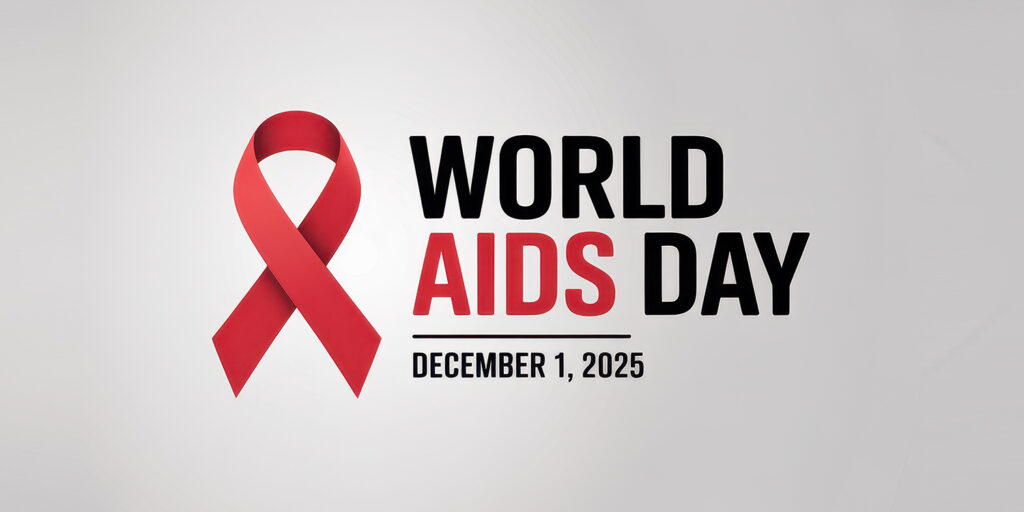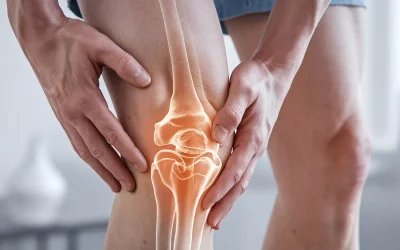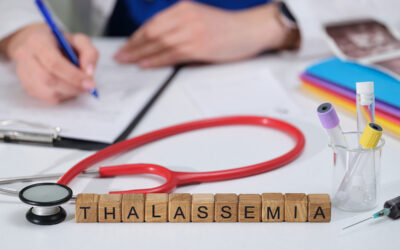World AIDS Day 2025: Transforming HIV Care Through Awareness and Action

Established in 1988 by the World Health Organization (WHO) and UNAIDS, World AIDS Day is observed every year on the 1st of December, to increase awareness about HIV, support those living with it, and remember those who lost their lives to AIDS-related illnesses. Over the years, advances in research and the availability of antiretroviral therapy (ART) have transformed HIV from a fatal infection into a manageable chronic condition. Yet, challenges such as late diagnosis, lack of awareness, and ongoing social stigma continue to affect millions worldwide. For countries such as India, where misconceptions and limited education often delay testing, World AIDS Day plays a crucial role in encouraging awareness, timely care, and compassion.
Beyond remembering and educating, the day serves as a reminder that ending the HIV epidemic requires community participation, equitable healthcare, and continuous advocacy for those living with the condition.
Table of Contents
ToggleWorld AIDS Day 2025 Theme
The official theme for World AIDS Day 2025, “Overcoming Disruption, Transforming the AIDS Response,” underscores a global effort to rebuild and strengthen HIV care after years of setbacks. Over the past few years, challenges such as the COVID-19 pandemic, limited healthcare access, economic pressures, and ongoing stigma have disrupted HIV prevention, testing, and treatment across many regions.
This year’s theme urges communities and healthcare systems to overcome these challenges by improving outreach, ensuring uninterrupted treatment, and promoting inclusive care for everyone living with HIV. It highlights the importance of innovation, resilience, and collaboration in restoring progress toward global HIV targets.
World AIDS Day 2025 reminds the world that the response to HIV must evolve through awareness, equitable healthcare, and continued action, so that no person is left behind in the journey toward ending AIDS.
What is HIV and AIDS?
HIV (Human Immunodeficiency Virus) is a virus that attacks the immune system, specifically the CD4 cells that help the body fight infections. If left untreated, HIV weakens the immune system over time, making the body more vulnerable to illnesses.
AIDS (Acquired Immunodeficiency Syndrome) is the most advanced stage of HIV infection. It develops when the immune system becomes severely damaged, leading to life-threatening infections and certain cancers. Not everyone with HIV develops AIDS. Early diagnosis and consistent treatment with antiretroviral therapy (ART) can prevent the virus from progressing to this stage.
Causes and Risk Factors Associated with HIV Transmission
Human Immunodeficiency Virus (HIV) spreads through the exchange of specific body fluids that contain the virus, such as blood, semen, vaginal and rectal fluids, and breast milk. It does not spread through casual contact, air, water, or sharing food. Understanding how HIV is transmitted is essential to prevent new infections and protect vulnerable groups. Common causes and risk factors include:
Unprotected Sexual Contact
Unprotected sex remains the most common mode of HIV transmission. The virus can enter the bloodstream through tiny tears in the mucous membranes during vaginal, anal, or oral sex with an infected partner.
Sharing Needles or Syringes
People who inject drugs and share needles or syringes face a high risk of contracting HIV. The virus can remain in contaminated needles and enter the bloodstream directly during reuse.
Mother-to-Child Transmission
HIV can pass from a mother to her baby during pregnancy, childbirth, or breastfeeding. However, with early testing, antiretroviral treatment (ART), and safe feeding practices, this form of transmission can be almost entirely prevented.
Blood Transfusions with Infected Blood
Unsafe transfusions or use of untested blood products can transmit HIV. In India, strict screening protocols in blood banks have significantly reduced this risk, but vigilance remains crucial.
Occupational Exposure
Healthcare workers who come into contact with infected blood through accidental needle-stick injuries or splashes on broken skin are at potential risk. Following standard safety precautions and using protective gear greatly reduces this risk.
Lack of Awareness and Education
Limited awareness about safe sexual practices, misconceptions about HIV, and fear of social stigma often delay testing and treatment. These factors continue to fuel the spread of the infection, especially in areas with low health literacy.
Symptoms and Stages of HIV Infection
HIV affects the immune system gradually, weakening the body’s ability to fight infections and certain cancers. The symptoms vary depending on the stage of infection, and many people may not realise they are infected until the disease has progressed. Common symptoms and stages of HIV infection include:
Acute HIV Infection (Initial Stage)
This stage occurs two to four weeks after exposure to the virus. Many people experience flu-like symptoms such as fever, sore throat, swollen lymph nodes, rashes, and fatigue. These symptoms appear as the body begins to produce antibodies against HIV. Since the viral load is high during this stage, the risk of transmitting the virus to others is greatest.
Chronic HIV Infection (Latency Stage)
After the initial phase, HIV enters a period of clinical latency. The virus continues to multiply at low levels, but the person may not show any symptoms for several years. Without treatment, HIV gradually weakens the immune system, leading to recurrent infections or weight loss. Regular monitoring and early initiation of antiretroviral therapy (ART) during this stage can effectively control the virus and prevent progression.
Advanced Stage (AIDS)
If HIV remains untreated, it advances to acquired immunodeficiency syndrome (AIDS), the most severe stage of infection. At this point, the immune system becomes severely compromised, and the body becomes prone to opportunistic infections such as tuberculosis, pneumonia, or certain cancers. Symptoms may include persistent fever, chronic diarrhoea, night sweats, unexplained weight loss, and fatigue. Prompt diagnosis and consistent ART can prevent HIV from reaching this stage and allow individuals to live healthy, long lives.
Prevention and Management of HIV/AIDS
Preventing HIV begins with awareness and responsible health practices. Modern medicine offers effective ways to control the virus and stop its spread, but prevention remains the strongest line of defence.
Prevention of HIV Transmission
Practising safe sex by using condoms during every sexual encounter significantly reduces the risk of transmission. Regular HIV testing is equally important, especially for individuals with multiple partners or those in high-risk groups. People who inject drugs should use sterile needles and avoid sharing syringes. Pregnant women are advised to undergo early HIV screening so that preventive treatment can be started to protect the baby. Healthcare workers should follow universal safety precautions to minimise occupational exposure.
Management of HIV Infection
Although there is currently no cure for HIV, effective treatment allows individuals to live long and healthy lives. The cornerstone of management is antiretroviral therapy (ART), which suppresses viral replication and prevents disease progression. Starting ART early helps restore immune function and reduces the risk of transmitting HIV to others. Ongoing medical supervision, regular monitoring of viral load, and good adherence to medication are essential for successful treatment. In addition to medication, nutritional support, counselling, and stress management play an important role in maintaining physical and emotional well-being.
With consistent care and support, people living with HIV can lead productive lives and contribute fully to their families and communities.
Empowerment Through Awareness and Compassion
Awareness and empathy are the cornerstones of the global fight against HIV. Even with significant advances in treatment, misinformation and stigma continue to create fear and social barriers. Empowering communities through education and compassion helps bridge this gap and ensures that more people seek care confidently.
Here are key ways to promote awareness and compassion:
- Educate through community programmes: Organise school sessions, awareness drives, and workshops to teach safe practices and the importance of regular testing.
- Normalise conversations around HIV: Open discussions reduce fear and help people feel comfortable seeking information and treatment.
- Challenge myths and misinformation: Share facts about HIV transmission and treatment to correct long-standing misconceptions.
- Support awareness campaigns: Participate in World AIDS Day events or local outreach programmes to spread correct information and encourage testing.
- Encourage inclusion and empathy: Treat people living with HIV with respect and kindness to help dismantle stigma in families, workplaces, and communities.
- Promote early testing and prevention: Empower people to get tested regularly and follow preventive measures without hesitation or shame.
Every action rooted in compassion and awareness brings society closer to an inclusive, stigma-free future where HIV prevention and treatment are accessible to all.
How to Support People Living with HIV
Supporting people living with HIV requires empathy, respect, and awareness. With timely treatment and care, most individuals can lead long and healthy lives. Here are some meaningful ways to offer support:
- Show understanding and compassion: Listen without judgment, maintain confidentiality, and offer reassurance rather than pity.
- Encourage medical care and treatment adherence: Remind loved ones to attend regular check-ups and continue their antiretroviral therapy (ART) as prescribed.
- Promote awareness and accurate information: Share reliable knowledge about HIV to dispel myths and reduce fear in the community.
- Avoid discrimination: Treat people with HIV with the same dignity and respect as anyone else, whether at home, work, or in social settings.
- Offer emotional and mental health support: Help individuals cope with stress and anxiety by being a source of comfort and motivation.
- Create an inclusive environment: Advocate for safe, stigma-free spaces where people living with HIV can access healthcare and employment without fear.
Every act of empathy and understanding helps reduce stigma and builds a stronger, more compassionate society that supports those living with HIV.
How Graphic Era Hospital Supports the Fight Against HIV/AIDS
At Graphic Era Hospital, we believe that HIV care begins with compassion and understanding. Our goal is not only to provide treatment but also to empower every patient with knowledge, confidence, and long-term support. We combine advanced medical care with a human touch to ensure that every individual receives the guidance and dignity they deserve. Here’s how we continue to make a difference in the fight against HIV/AIDS:
Experienced and Supportive Medical Team
Our infectious disease and internal medicine specialists have years of experience in managing HIV and related conditions. They combine medical expertise with empathy, ensuring that every patient receives personalised guidance and consistent care.
Confidential Counselling and Testing
We understand that confidentiality and trust matter most. Our hospital offers safe, judgment-free counselling and HIV testing services, allowing patients to seek help comfortably and confidently.
Holistic and Personalised Care
At Graphic Era Hospital, we look beyond medication. Our care plans include antiretroviral therapy (ART) management, nutritional counselling, and emotional support to help patients stay healthy, positive, and resilient.
Community Awareness and Outreach
We actively participate in health awareness drives and World AIDS Day campaigns to educate the community, promote early testing, and reduce stigma around HIV.
Patient-Centred Commitment
Our approach is rooted in compassion. We stand by every individual through each stage of diagnosis, treatment, and recovery, because at Graphic Era Hospital, every life matters and every voice deserves to be heard.
Conclusion
The fight against HIV/AIDS is not only a medical challenge but also a social responsibility that calls for awareness, empathy, and collective action. Early diagnosis, safe practices, and continuous treatment have transformed HIV from a life-threatening infection into a manageable condition, but ending the epidemic requires society to stand together without stigma or fear.
At Graphic Era Hospital, we remain dedicated to raising awareness, offering advanced diagnostics, and providing holistic, confidential care for people living with HIV. Together, through knowledge and compassion, we can move closer to a future free from HIV-related discrimination and disease.
To book a consultation or HIV screening at Graphic Era Hospital, call 1800-889-7351. Because empowerment begins with awareness, and every step toward understanding is a step toward healing.
Frequently Asked Questions (FAQs)
Can AIDS be cured?
There is currently no cure for AIDS, but with proper treatment using antiretroviral therapy (ART), the progression of HIV can be effectively controlled, allowing individuals to live long and healthy lives.
How is AIDS caused?
AIDS is caused by the Human Immunodeficiency Virus (HIV), which weakens the immune system over time. Without treatment, HIV progresses to AIDS, the most advanced stage of infection.
Is AIDS contagious through touch or saliva?
No. HIV does not spread through casual contact, hugging, sharing utensils, or saliva. It is transmitted only through specific body fluids such as blood, semen, vaginal or rectal fluids, and breast milk.
By Specialities
- Bariatric Surgery
- Cancer Care
- Cardiology
- Dental
- Dermatology
- Diabetes & Endocrinology
- Endocrinology and Diabetes
- ENT (Ear Nose Throat)
- Eye Care
- Gastroenterology
- Haematology
- Health Care
- Health Tips
- Hematology
- Hepatology
- Internal Medicine
- Mental Health and Behavioural Sciences
- Metabolic
- Neonatology
- Nephrology
- Neurology
- Nutrition & Dietetics
- Obstetrics & Gynaecology
- Oncology
- Ophthalmology
- Orthopaedics
- Paediatric
- Physiotherapy & Rehabilitation
- Plastic and Reconstructive Surgery
- Psychology
- Pulmonology
- Rheumatology
- Spine
- Urology
Recent Posts
- World AIDS Day 2025: Transforming HIV Care Through Awareness and Action
- Sleep Disorders: Types, Causes, Symptoms & Treatment Options
- Lower Back Pain: Causes, Symptoms & Treatment
- World Pancreatic Cancer Day 2025: Turning Awareness into Lifesaving Action
- Understanding Knee Arthritis: Types, Symptoms, and Treatments
Need expert medical advice?
Share your details and our healthcare specialists will reach out to assist you.
By proceeding, you acknowledge and agree to our Privacy Policy, Terms of Use, and Disclaimer.




















